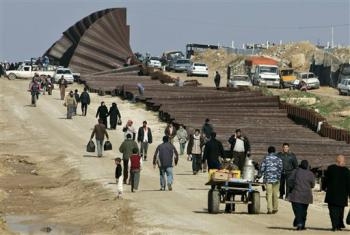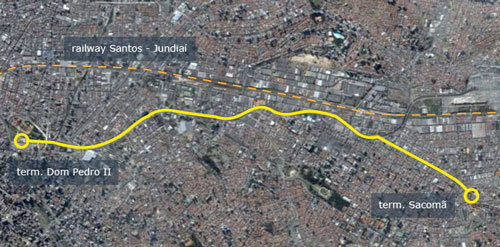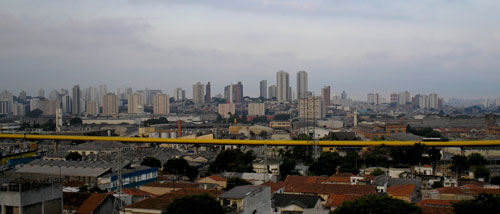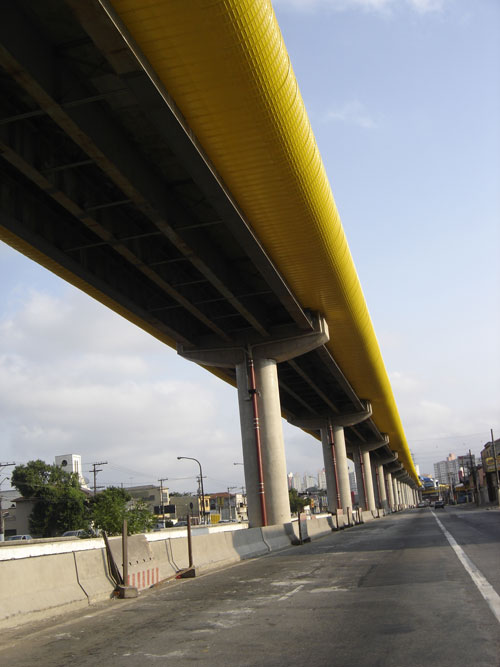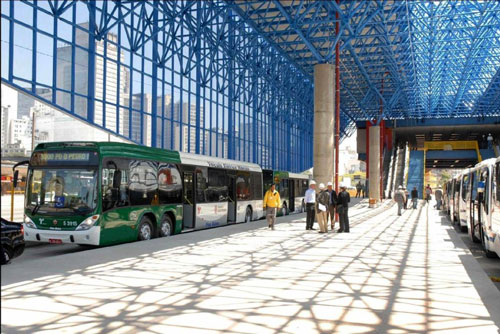The link below leads to the Subtopia forum discussion about the aesthetic respresentations of slums / favelas / shantytowns by artists like Dionisio Gonzales, with comments by architect Lebbeus Woods:
http://subtopia.blogspot.com/2007/11/squatter-imaginaries.html
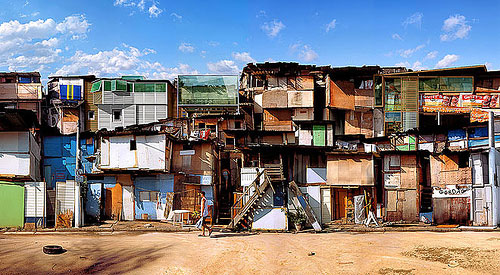
The work of Gonzalez tricks the eye, making the slum look like an abstract composition of materials, and indeed very spacy streets. The question is raised wether Gonzalez has ever been to a favela himself, maybe he just picked the images from the internet and started cutting and pasting? Aestheticizing violence and poverty is concidered controversial, but somehow Western scholars and artists have become intrigued, almost obsessed, by the visuals of the third world slums. Even though these do not occur in the organized first world, or maybe just because of that.

In the third world, slums are normally considered result of social inequality and lack of planning. Some intellectuals of the West however, have regarded the slums of Africa, India and South America as innovative and alternative forms of building the city, a more “pragmatic” and direct one than traditional planning.
Where does the growing attention for slums come from? Are people triggered by the unjustice of slum removals around the globe, described in Mike Davis´ book Planet of Slums, are they disappointed by the results of slum urbanization projects? Or perhaps after a while some of the first worldeners just get bored of the organized, planned and clean aesthetics in which they live and start longing for something more “authentic” and chaotic? Actually, after taking a tourist tour through the Rocinha favela in Rio, one might get the idea that it is very nice and interesting to live in a favela, despite the drug traffic, poverty and lack of infrastructure.
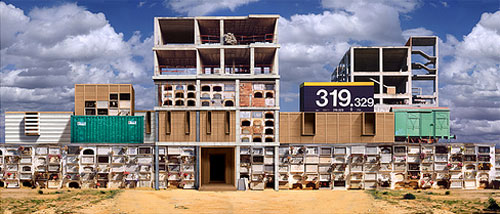
Publications on the subject vary from very objective descriptions of the problem to rather quick judgements from a aesthetic and almost touristic point of view. Rem Koolhaas may have found his truly “generic city” exactly in the shantytowns. Unlike planned urbanization, the un-planned urban poverty looks the same anywhere in world, being the result of true (unvoluntary) minimalism.
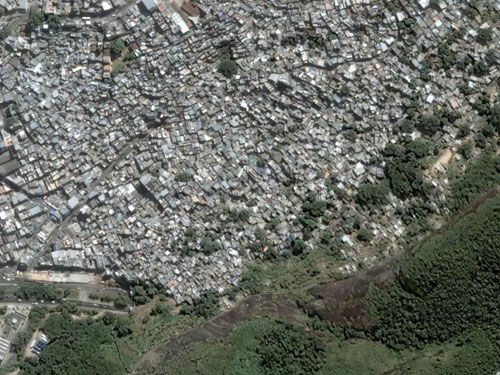
Discussion about the following 3 books on slums:
Mike Davis, Planet of Slums (London, New York: Verso, 2006)
Robert Neuwirth, Shadow Cities: A Billion Squatters, A New Urban World (New York: Routledge, 2006)
Informal City: Caracas Case, Alfredo Brillembourg, Kristin Feireiss, and Hubert Klumpner, eds. (Munich: Prestel, 2005)
www.gsd.harvard.edu/research/publications/hdm/current/27_Beardsley.html
More work of Dionisio Gonzalez
http://fiedler.null2.net/index.php?id=dionisiogonzlez
Forum on favelas (portuguese)
www.arcoweb.com.br/forum/discute.asp?forum_id=28215
“The informal city” at the Rotterdam Architecture Biennale 2007, featuring Caracas, São Paulo and Mexico
www.iabr.nl/page/DVD_Caracas_The_Informal_City
Arif Hasan, The Informal City
UNCHS (Habitat) Regional Symposium on Urban Poverty in Asia
Fukuoka, 27-29 October 1998
www.fukuoka.unhabitat.org/out/siryo/r07.html
Jananese university project on informal settlements
www.informalcity.com






